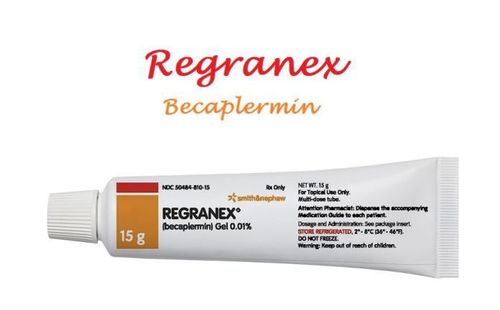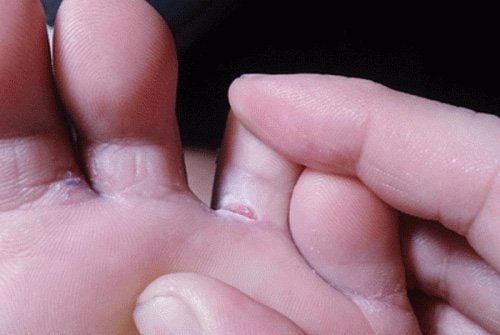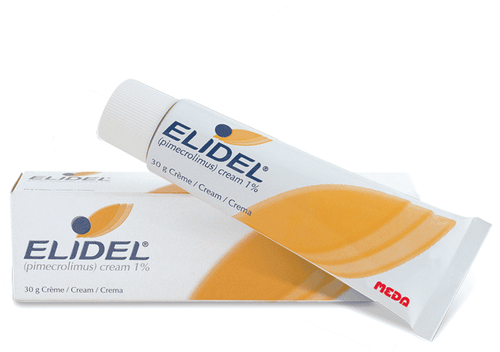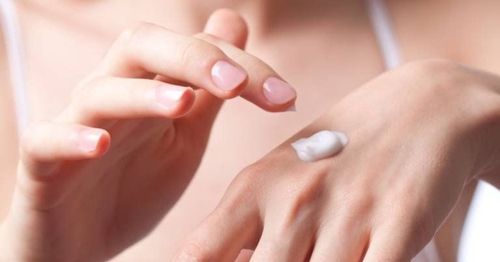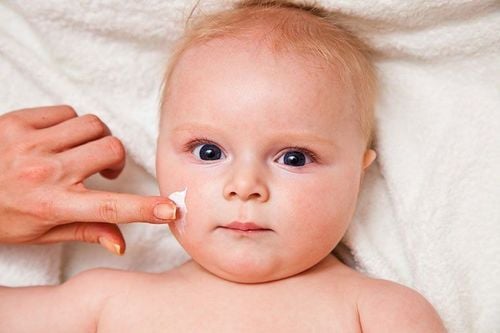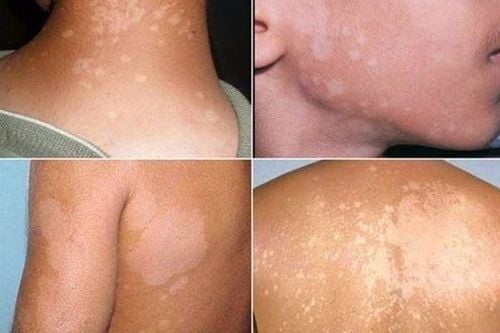This is an automatically translated article.
The article was professionally consulted with Specialist Doctor I Tran Van Sang - Dermatologist - Department of Medical Examination & Internal Medicine - Vinmec Danang International General Hospital.Cracked heels are a frustrating condition. Patients often experience a lot of pain and have difficulty moving. Therefore, effective treatment of cracked heels is a matter of great concern.
1. An overview of cracked heels
A survey found that 20% of adults in the United States suffer from cracked heels. This can happen in both adults and children, but seems to affect women more often than men.For most people, cracked heels are not too serious. It can be uncomfortable to walk barefoot. In some cases, cracks in the heel can become very deep and cause a lot of pain. Therefore, patients should learn the most effective home remedies for cracked heels.
2. What causes cracked heels?
The first sign of cracked heels is that there are dry, thickened areas of skin and the phenomenon of broken skin cells, around the heel area. As you walk, the fat pad under your heels expands. This makes the skin layers more prone to cracking.Other factors that can cause cracked heels include:
Standing for long hours. Go barefoot or wear open-heeled sandals. Take a long hot shower. Using strong soaps can strip the skin of its natural oils. Wear shoes that don't fit or don't protect your heels. Dry skin due to climate, such as cold temperatures or low humidity. If you don't moisturize your feet regularly, they can dry out faster.
Other medical causes of cracked heels are as follows:
High blood sugar and poor circulation due to diabetes are common causes of dry skin. Nerve damage can leave you unaware your feet are dry, cracked, and painful. Other conditions that can lead to dry skin and cracked heels include: Vitamin deficiency, fungal infections, hypothyroidism, atopic dermatitis, juvenile dermatosis, psoriasis, plantar keratosis , obesity, pregnancy and aging.
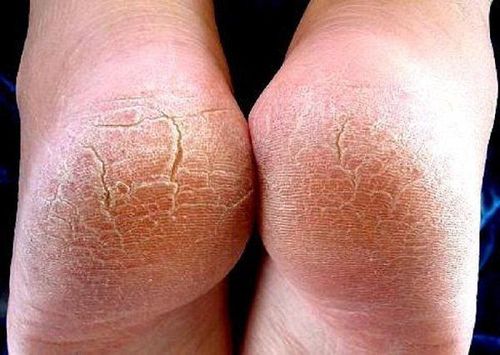
3. Can cracked heels be accompanied by other symptoms?
In addition to cracked heels, patients may also experience conditions such as:Peeling skin. Itchy. Pain can be severe. Bleed. Red and inflamed skin. Ulcers. In some severe cases, you can develop complications of cracked heels, especially if the cause is medical. Complications may include:
Hyperkeratosis, chapped eczema. Loss of sensation in the heel. Cellulitis, which is a serious infection. Diabetic foot ulcers. Symptoms of an infection include pain, heat, redness, and swelling. When you have these signs, you need to immediately go to a medical facility for examination and treatment.
4. Effective treatment of cracked heels
If you still wonder “what to do with cracked heels?” Then here is the answer for you:4.1. Use a heel cream or a thick moisturizer The first effective treatment for cracked heels is to use a heel cream. These nourishing oils contain ingredients that moisturize, soften, and exfoliate. Prioritize the selection of products containing the following ingredients:
Urea. Salicylic Acid. Alpha-hydroxy acids. Saccharide isomerate. You can find these heel creams over the counter or online. However, when using it, there are a few things to note as follows:
Apply heel cream in the morning to increase skin elasticity before starting a new day. Moisturize your heels two to three times a day. Wear heel protectors. Some heel balms can cause mild stinging or irritation, but this is normal. Consult your doctor if the balm continues to bother you or cause serious reactions. Severe cases of cracked heels may require prescription strength creams or steroid creams to help reduce inflammation and itching.
4.2. Soaking and exfoliating feet Soaking and exfoliating feet is the answer if you still wonder “what to do with cracked heels? ". Accordingly, the skin around cracked heels is often thicker and drier than the rest of the body. This skin tends to separate when you apply force. Soaking and moisturizing your feet can help. However, when soaking your feet, you should note:
Keep your feet in warm, soapy water for up to 20 minutes. Use a loofah, foot scrub, or pumice stone to remove thick, hard skin. Gently pat your feet dry. Apply a thick heel cream or moisturizer to the cracked skin. Apply mineral oil to your feet to lock in moisture. Wear socks to avoid spreading grease around. Avoid scrubbing your feet while they are dry. This increases the risk of skin damage. You can also try using sleeves instead of socks when moisturizing your heels. 4.3. Liquid Bandages You can also use liquid bandages over the crack to seal the wound and prevent further infection or cracking. This product comes in a spray form, which means you can go all day without worrying about the bandages coming off.
Liquid bandages are an effective treatment option for cracked heels, especially deep heel cracks with bleeding. Apply the liquid bandage to clean, dry skin. As the crack heals, the coating is forced to adhere to the surface of the skin. You can buy this product without a prescription in stores or online.
Some people report success using super glue to close cracks in the skin. A 1999 case study observed ten people using two to three drops of super glue along each crack. They closed the cracks together for 60 seconds to allow them to close their mouths. About a week later, they announced that the cracks had closed and caused no pain to the patient. But commercial super glue can be toxic, depending on the brand. Therefore, you need to talk to your doctor before trying this method.
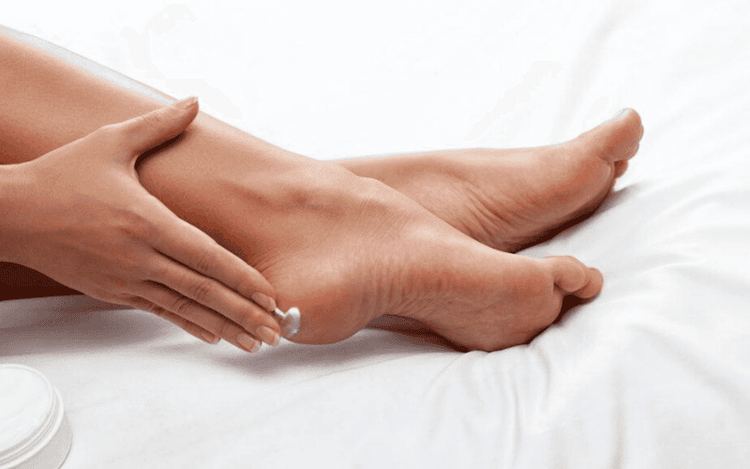
4.5. Coconut oil is effective for cracked heels Coconut oil is often recommended for dry skin, eczema and psoriasis. It can help the skin retain moisture. Using coconut oil after a foot bath can also be a good option. The anti-inflammatory and antibacterial properties of coconut oil can cure cracked heels if they are prone to bleeding or infection.
4.6. Other home remedies There are many other home remedies for cracked heels, although none have been proven to specifically treat the crack. Most of the ingredients are focused on moisturizing and softening the skin, including ingredients like:
Vinegar for oily feet. Olive oil or vegetable oil for moisturizing. Shea butter for moisturizing. Mashed banana to moisturize. Wax to maintain moisture. Oatmeal mixed with oil for exfoliation. However, users need to be careful when using it and do not arbitrarily treat cracked heels if it is related to other diseases. Severe cases of cracked heels should also be evaluated by a physician, regardless of prior medical history. Your doctor will recommend the best treatment for your condition.
5. Measures to prevent cracked heels
Footwear plays an important role in prevention. If you've had a history of cracked heels before, try to find shoes that fit and protect and support your heels. Whenever possible, wear shoes with wide and sturdy heels to support and cushion the heel.What you should avoid to protect your heels are as follows:
Flip-flops and sandals can increase the risk of dry feet, so you should not use them. Open-back shoes often don't provide enough heel support, so you shouldn't wear them either. Avoid wearing high and pointy heels, which can cause the heel to shift to one side. Shoes that are too tight can cause your feet to crack, so wear shoes that fit well. Other ways to prevent cracked heels:
Avoid standing in one position or sitting cross-legged for too long. Apply moisturizer to your feet at night, then use socks to lock in moisture. Check your feet daily, especially if you have diabetes or another condition that causes dry skin. Wear custom insoles (orthotics) to cushion your heels and distribute your weight evenly across your feet. Wear good quality or clinically tested padded socks. Use silicone heel pads to retain moisture and prevent the heel pad from expanding. Drink a lot of water. Use a pumice stone after bathing to help prevent skin thickening. However, you should avoid removing calluses on your own if you have diabetes or peripheral neuropathy. Doing this can inadvertently create a wound and increase the risk of infection. In conclusion, in many cases, cracked heels are not a cause for concern. You can relieve it with over-the-counter or at-home remedies. See your doctor if you have severe cracked heels or have underlying medical conditions like diabetes. The important purpose of seeing a doctor is to prevent possible serious complications. Although signs of improvement will appear after the first treatment, it may take several days or weeks for the fissures to heal.
Please dial HOTLINE for more information or register for an appointment HERE. Download MyVinmec app to make appointments faster and to manage your bookings easily.
Reference source: healthline.com




